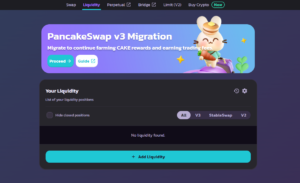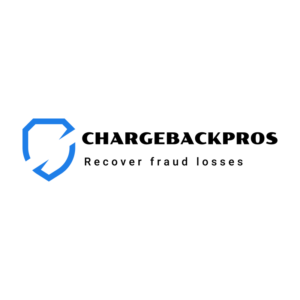 Across the Atlantic, interesting things are happening in the world of banking and payments. The open banking concept, mandated by law in the EU and partially adopted in the UK, has forced banks to grant independent fintech providers access to their customer data.
Across the Atlantic, interesting things are happening in the world of banking and payments. The open banking concept, mandated by law in the EU and partially adopted in the UK, has forced banks to grant independent fintech providers access to their customer data.
This is leading to all kinds of innovative new consumer financial services, including a few that could be game-changing for merchants, like variable recurring payments. As an alternative to direct debit payments, the potential use cases for this new technology are only just beginning to come into focus. How will variable recurring payments work, and what benefits do they offer to merchants?
- What are Variable Recurring Payments?
- What are the Advantages of Variable Recurring Payments?
- Conclusion
Merchants based in the US can be excused for not having open banking at the forefront of their thoughts, but in Europe and other regions, the possibilities of open banking are generating a lot of interest.
One of the primary objectives of open banking is to give consumers more control over their financial data and enable them to shop around for competitive and innovative financial services without having to switch banks.
Open banking made its big debut in 2015 when the EU enacted the revised Payments Services Directive (PSD2). It introduced many new rules designed to bring the rules and safeguards around payments into the modern era, including the open banking mandate. Now that the actual enforcement of PSD2 provisions has gone into effect, we are starting to see the fruits of open banking: new products and services that connect with the consumer’s bank through an API.
This means that when a consumer wants to try out new fintech—such as variable recurring payments—they don’t have to wait for their bank to decide to offer it or move their account to a bank that does. They can use their existing account in conjunction with any third-party provider they choose.
Merchants, for their part, may have to decide which of these new payment services they want to work with. Taking on a new and unfamiliar payment option always carries some risks, but it can also expand your customer base and help you avoid some of the problems associated with traditional payment systems, like chargebacks.
What are Variable Recurring Payments?
Variable recurring payments, or VRP, represent a new model for the type of recurring payments currently handled by methods such as direct debit and card-on-file. With VRP, the consumer authorizes a third-party payment services provider to initiate recurring payments for them, funded by their existing bank account, in accordance with certain parameters.
The consumer sets the maximum number of transactions for a given period of time, a maximum value for each individual transaction, and a maximum value for all transactions processed during that time. Once those parameters are established, any payment that does not exceed them can be processed without obtaining new authorization from the consumer.
Unlike the existing recurring payment methods, VRP does not obligate the merchant to store any of the consumer’s sensitive bank account or credit card data—only the account information that identifies them to the VRP provider.
One reason that VRP has come into existence in Europe is due to the Strong Customer Authentication (SCA) mandate in the PSD2. It’s challenging to process recurring payments in a way that is both convenient to the consumer and compliant with the SCA mandate. With VRP, the consumer can effectively authorize a slate of payments in advance, and the merchant doesn’t have to keep bugging them for SCA over and over.
What are the Advantages of Variable Recurring Payments?
In addition to the way it resolves the SCA issue, VRP has a number of other potential benefits to offer both consumers and merchants.
- VRP would allow consumers to set up automatic recurring payments for charges that can vary in amount from month to month, like utility bills.
- Merchants could implement convenient and secure one-click purchasing options through VRP.
- Unlike direct debit, VRP fund transfers can be instantaneous.
- VRP is more secure than direct debit or stored credentials because all the merchant has to store is the consumer’s VRP account ID. If a fraudster hacks into the merchant’s servers and steals this data, it would not grant them access to the consumer’s account nor the ability to make any unauthorized payments.
- Consumers wouldn’t have to update expired or canceled account numbers with VRP.
- Consumers could cancel their recurring payments with their VRP provider instead of having to contact the merchant.
- VRP is not part of the credit card payments ecosystem, so VRP payments are not subject to the chargeback process.
Outside of retail, VRP has even more use cases. The concept of VRP originated in “sweeping,” a process outlined and mandated by the UK’s Open Banking Implementation Entity (OBIE). Sweeping describes the transfer of funds between two accounts owned by the same individual.
The major banks under OBIE’s authority are required to make sweeping accessible to consumers and providers, at no cost, effective summer 2022. VRP is just the concept and technology behind sweeping being used to fund transfers between separately-owned accounts.
Conclusion
For now, VRP remains slightly out of reach. The mandate for the sweeping set to take effect in the UK this summer does not pertain to consumer-to-merchant fund transfers, and it has not yet been determined when banks will be required to make VRP available in a retail context.
One of the matters yet to be resolved is the question of how VRP payment disputes will be handled. While VRP is resistant to third-party fraud compared to credit cards, and has no connection to the chargeback system that exists in the US, it will not eliminate the confusion, conflicts, and unpredictable events that lead to customer disputes.
Merchants will want to know how VRP’s dispute resolution process will work before they throw themselves into its embrace.
It also remains to be seen when VRP will reach the states. While the US does not yet have the same open banking regulations as the EU, there are signs that things are moving in that direction. If VRP ends up with wide adoption in overseas markets, chances are good that American merchants will soon find it—or something like it—among the many alternative payment options they have to choose from.
Thanks for following the ChargebackPros blog. Feel free to submit topic suggestions, questions, or requests for advice to: info@chargebackpros.org











